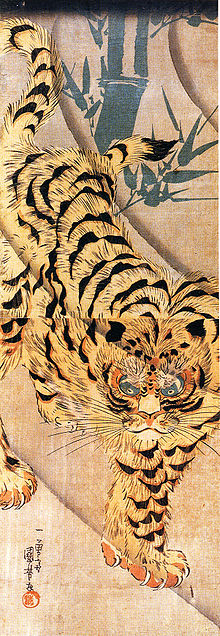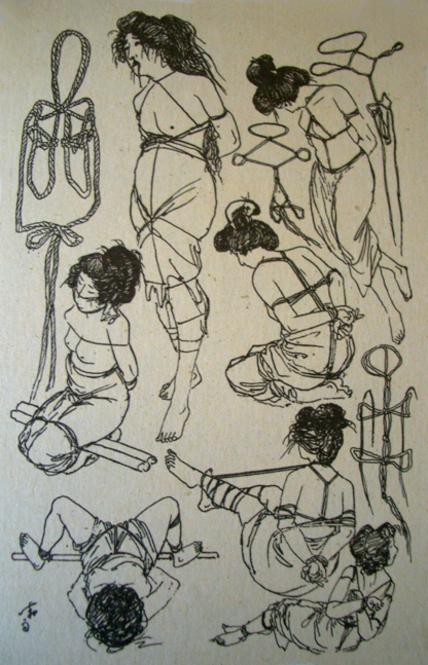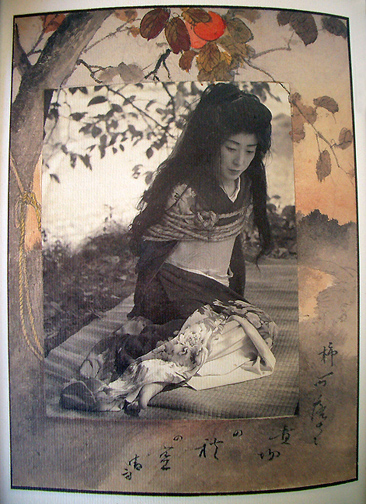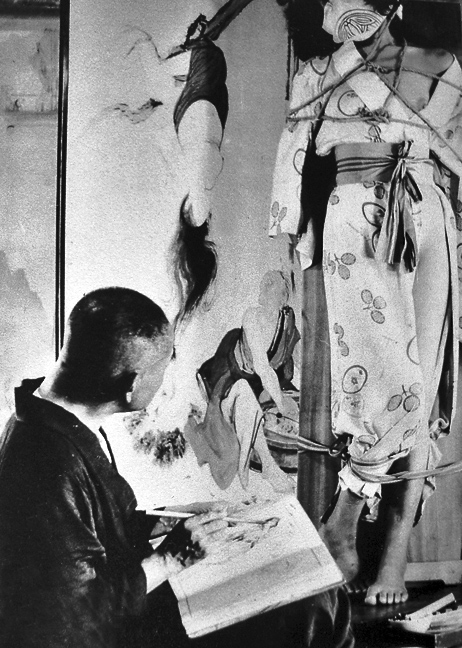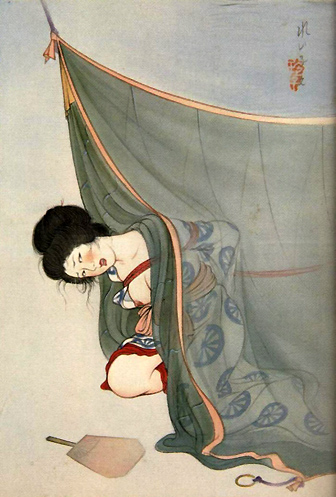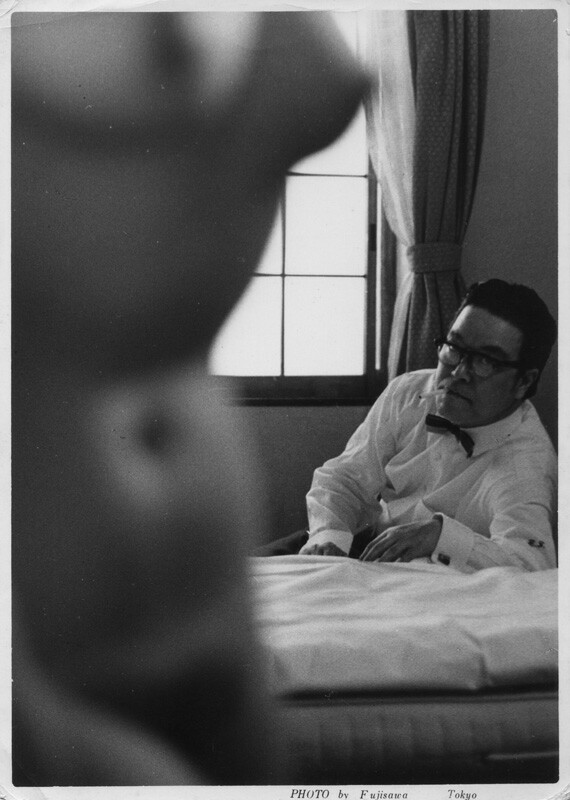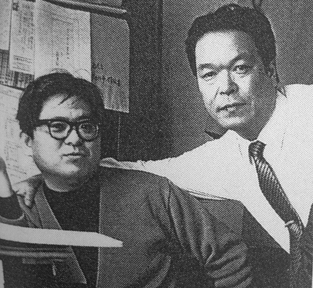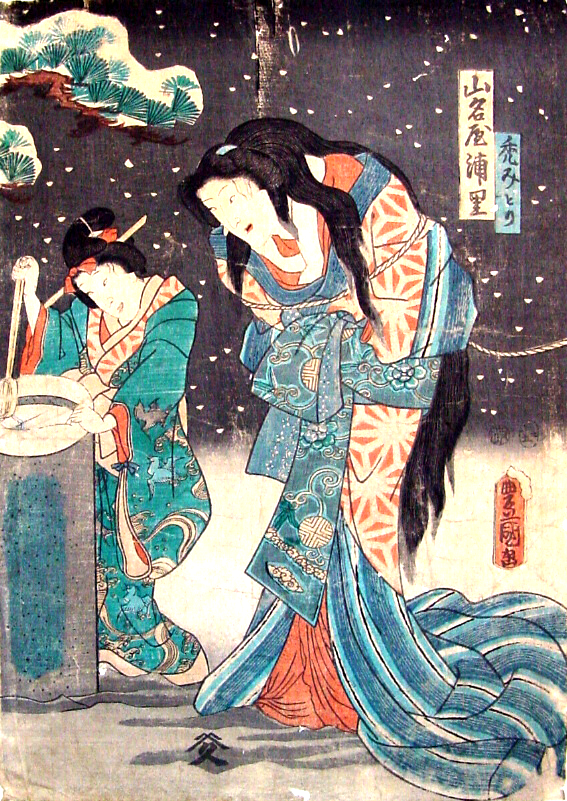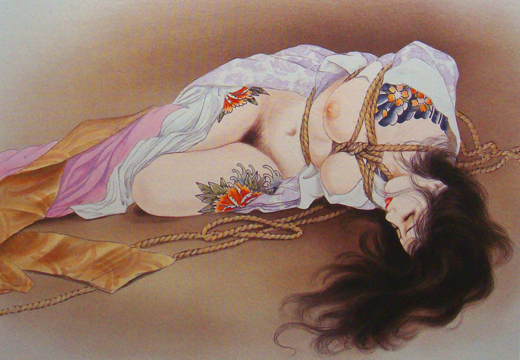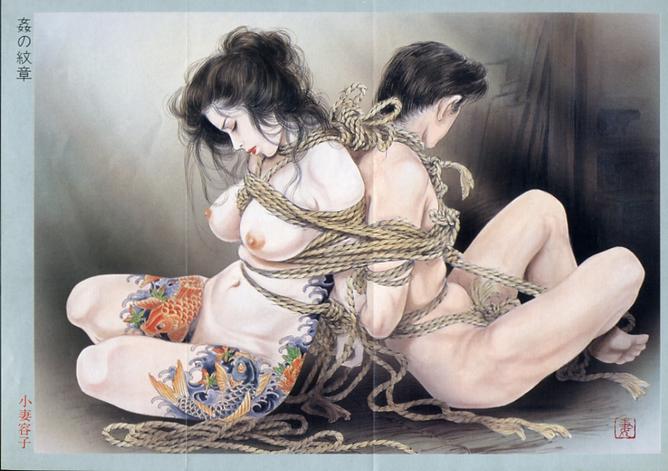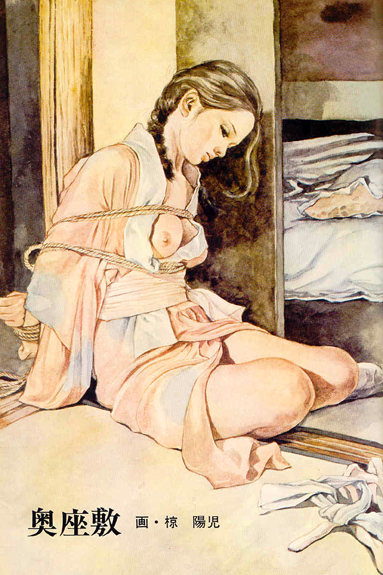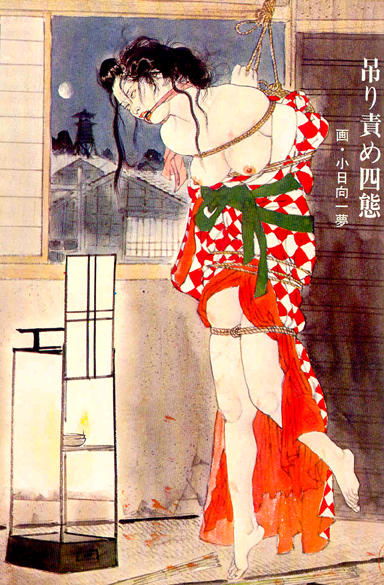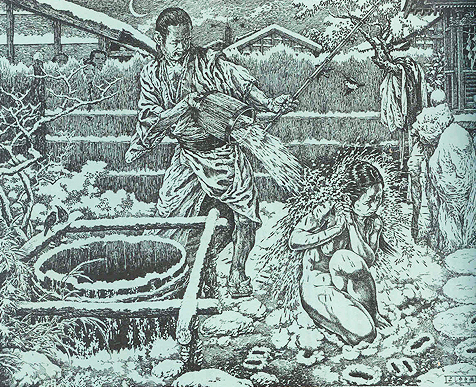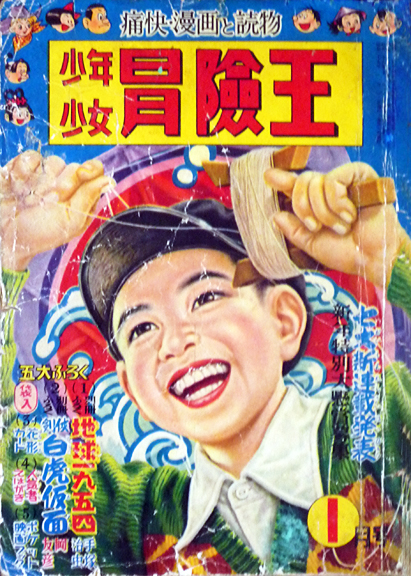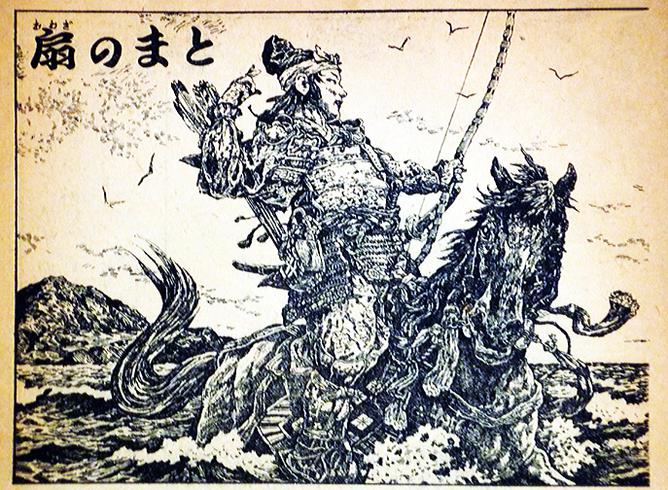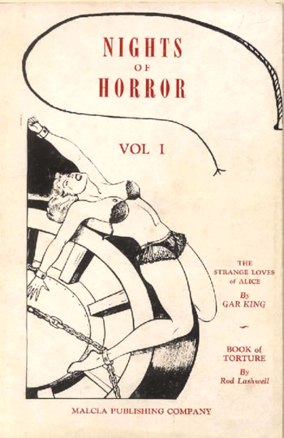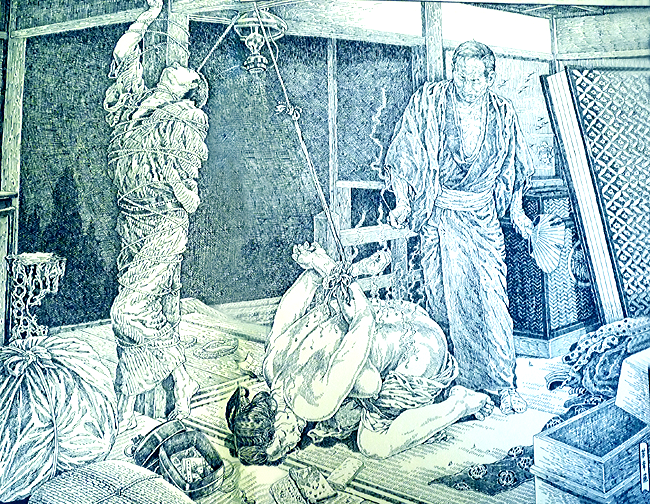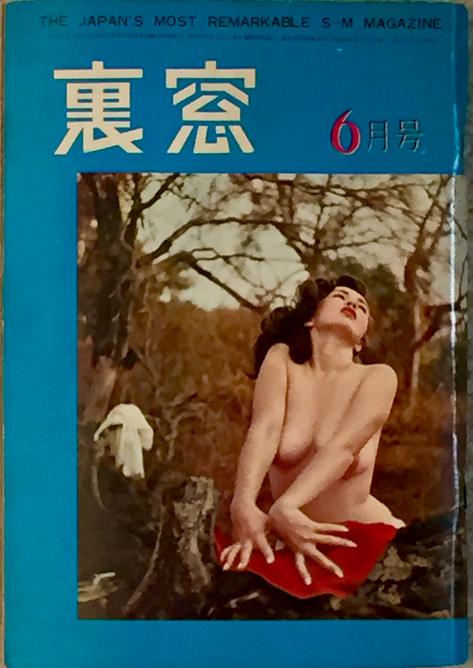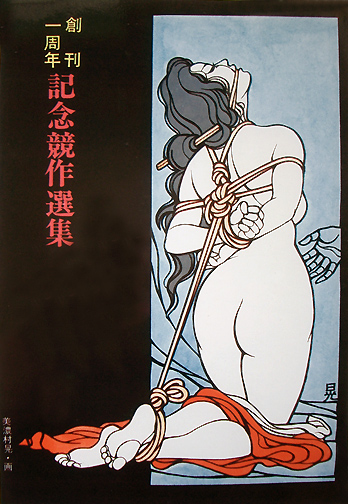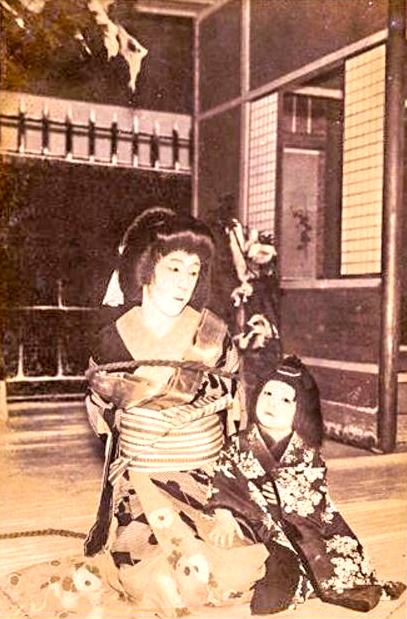Or everything you always wanted to know about Japanese erotic bondage when you suddenly realized that you didn't speak Japanese
The Beauty of Kinbaku
Kinbaku
and Art
Please note: no part of these articles may be reproduced by any means without the express written consent of the author or the publisher, King Cat Ink.
Chapter Twelve
Kinbaku and Art-A short history of Kinbaku illustration and
some revelations about that most mysterious master Ishizuka!
by Master “ K”
This page is best viewed on Google Chrome.
Please join me next time as we continue our exploration into the fascinating subject of “Kinbaku and Art!”
Fortunately, in 2010 a happy, accidental meeting with legendary rope master Nureki Chimuo at the SM library brought the first glimmer of light into Ishizuka’s past.
Following in the traditions of Ukiyo-e, the most distinguished of these SM magazine illustrators were all very well trained and the best brought a unique sensibility to their art.
The problem was I couldn’t find anything about him! Zero! Zip! Zilch! Nada! Even hours of research at the SM library and museums in Tokyo turned up nothing about this mysterious and talented man (other than more extraordinary illustrations). Therefore, and with great regret, I resigned myself to leaving him out of the first edition and feared he would always remain for me the “mystery man” of kinbaku art.
(For those interested, most of these artists have extensive biographies, bibliographies, as well as examples of their art, in “The Beauty of Kinbaku.”)
However, one of the greatest of these masters went virtually unknown for many years despite his quite brilliant work being published in numerous “golden age” BDSM magazines of the 1960’s through the 1980’s.
As should be obvious from the above illustration, Ishizuka was a remarkable artist with a distinctive style and I knew even from the first planning stages of the first edition of my book “The Beauty of Kinbaku” that I wanted to include him.
And then of course there are the many brilliant artists who contributed to the “golden age” BDSM publications of the 1950’s through the 1980’s, some of whom are still active today despite the recent drastic reduction in outlets for their work.
Fortunately for Kinbaku art aficionados and collectors a number of these great masters have had their lives well documented by dedicated biographers and their work collected in attractive books and magazines which are still available today.
The most famous and skilled would include such names as Kita Reiko (AKA Minomura Kou), Muku Youji, Kobinata, Ozuma and Juan Maeda, among many others.
The history of Kinbaku has been blessed for many, many years, some would say centuries, with exceptional artists who put pen and brush to paper to create wonderful works of art that involve Japanese style rope.
Itoh Seiu sketches, circa 1950's.
Behind the scenes still of the 3 story suspension - 4 - take off.
Some of the many great names who occasionally dabbled in BDSM illustration include arguably the most famous Japanese artist Hokusai, the last great Ukiyo-e printmaker Yoshitoshi Tsukioka and, of course, the “Father of modern Kinbaku” Itoh Seiu whose primary means of expression was painting and drawing and whose love of Kabuki theater’s stories of brave Samurai and captured princesses first ignited the flames of his interest in Japanese rope as a young boy.
Generally speaking, these illustrations have fallen into a number of categories:
- Shunga (Japanese erotic pictures) which have had a long history in Japanese art beginning in the Heian period (794 to 1185) and reaching a height in popularity in the Edo era (1603 to 1867) thanks to advanced woodblock printing techniques (Ukiyo-e) and a newly affluent middle class.
- Book illustrations beginning at least in the 17th century.
- Kabuki theater illustrations and portraits, also wildly popular in the Edo era.
- Newspaper illustrations, beginning in the 19th century.
- Magazine illustrations beginning in the late 19th through the 20th century and down till today.
- In addition, there have always been individual artists who have done more ambitious oil paintings, murals, etc.
Itoh Seiu collage artwork, circa late 1950's.
Itoh Seiu drawing a model, circa 1960.
This is the brilliant Ishizuka Yoshiyuki, one of the most mysterious, maddening to research and talented artists of the “golden age” of kinbaku/SM magazine illustration.
Bound actor in a kabuki print
by Kunisada, circa 1850
Beautiful Kita Reiko illustration for 1970's BDSM magazine.
Portrait of Kita Reiko (AKA Minomura Kou), circa 1960.
Nureki Chimuo and Minomura Kou at Uramado magazine, circa 1960.
Magazine illustration from Uramado magazine by Ishizuka Yoshiyuki, circa 1961.
This was thanks to the fact that Nureki, in his youth, had worked at Uramado magazine where Ishizuka first published his extraordinary illustrations. Here is the story Nureki told.
Ishizuka was already an elderly man when he contributed to Uramado in the 1960’s, and later to SM Select in the 1970’s. He was a skilled metal craftsman who worked in the Asakusa area of Tokyo and made netsuke (Author’s note: netsuke are carved button like ornaments, especially of ivory or wood, often worn from the sash of a kimono).
Like many other fine artists, Ishizuka came to Uramado and offered his work to Minomura Kou (the brilliant artist, publisher and chief editor of Uramado magazine) who acted as his patron.
He only drew two or three pictures a year and just brought them in whenever he was finished. Nureki added, “You can understand that it took him a long time to complete those pictures–look at the detail!”
As tantalizing as this information was, it still didn’t fill in enough blanks.
Happily, a conversation later in 2010 with the great movie rigger Urado Hiroshi, who also worked at Uramado at the same time as Nureki, filled in more details and added one key fact.
Urado-san confirmed what Nureki said about Ishizuka being a metal artisan in Asakusa but clarified what that means–that Ishizuka was an engraver for metal printing. He pointed to the fine lines on the pages we looked at and said they showed a high level of skill. He also said he didn’t think Ishizuka was the sort of man who would use a penname!
This last deduction proved the breakthrough. Thanks to the invaluable help of the librarian in charge of the manga (comic) collection at Meiji University in Tokyo, it was discovered that there was a noted illustrator named Ishizuka Yoshiyuki that was known for doing comic book illustrations for children’s magazines in the early 1950’s who had at one time studied under the well know artist Itoh Hikozo (no relation to Itoh Seiu).
The final confirmation came when the same wonder librarian continued his researches until he found the artist’s connection, independently, to Uramado magazine!
Looking at the Ishizuka illustrations in such children’s manga as “Adventure King for Boys and Girls,” “Manga King” and “Thrilling Adventures,” it became clear that it was the same artist. Urado-san agreed. He also felt everything about the comic pages were consistent with what he observed in Ishizuka the SM artist–a high sense of imagination and drama in setting the scene (like a movie director), the mood of the words he chose for his manga and kinbaku illustration’s titles, etc.
In the June 1961 issue of Uramado he found a small reference to the illustrator Ishizuka in which it was written that the artist lived in “Kojima in Asakusa” and that he had some time previously studied under none other than Itoh Hikozo!
However, Shuster did this work anonymously. Ishizuka was content to be publically credited. I can think of few better examples to illustrate the differences in attitudes about SM erotica between the US and Japan.
It might amaze some to think that a 1950’s era children’s magazine artist would also do wonderful work for decidedly adult SM magazines. And yet, is this really so odd? It’s happened before. For instance, in the United States there’s the case of famed Superman co-creator Joe Shuster who, late in his career and needing money, did illustrations for the 1950’s BDSM oriented, adult comic “Nights of Horror.”
A brilliant and original artist, just one of the great names of Kinbaku illustration.
Ishizuka contributed numerous beautifully executed, highly complex and original pieces of art to Uramado and SM Select magazines in the 1960’s and 70’s under the gentle patronage of Minomura Kou. When that genius passed away in 1984 Ishizuka’s unique SM art was also seen no more.
Illustration by Kobinata, circa 1970.
Illustration by Muku, circa 1970.
Bound couple by Ozuma, circa 1980.
Illustration by Ozuma, circa 1980,
Boys magazine illustration by Ishizuka, circa 1950.
Boys magazine cover, circa, 1950.
Cover of Uramado magazine - June 1961.
Cover of "Nights of Horror" magazine # 1, illustrated by Joe Shuster.
"Adulterous Couple Being Punished" by Ishizuka from Uramado magazine, circa 1960.
Book illustration by Kita Reiko (AKA Minomura Kou), circa 1975.
Bound Kabuki actor onstage circa 1935.
Links to Other Chapters of Kinbaku and Art
